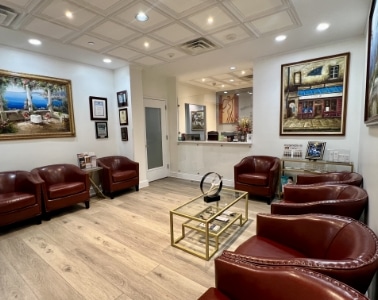
Browlifts (forehead lifts) can revitalize drooping or lined foreheads, helping you look less angry, sad or tired. Using either traditional or minimally invasive (endoscopic) methods, browlifts involve the removal or alteration of the muscles above the eyes to smooth lines and raise the eyebrows for a more youthful appearance. The procedure is often combined with other operations such as blepharoplasty (eyelid surgery) and facelifts to improve the look of the eyes and other areas of the face.
While browlifts are typically performed on patients aged 40-60 to counteract the effects of aging, anyone with lined or inelastic skin on the forehead - whether it's caused by muscle activity or inherited conditions - is eligible. The procedure is usually performed in an office-based facility or surgery center under local anesthesia and sedation.
Traditional browlift
First, the patient's hair is tied with rubber bands near the incision site. Then the surgeon makes a coronal (headphone-shaped) incision behind the hairline, stretching between the ears and across the top of the forehead. The incision may be placed further back or made along the skull bone joints to minimize its appearance in patients with thinning hair or who are bald. Then the forehead skin is lifted, tissue is removed, muscles are adjusted and the eyebrows may be lifted. Excess skin is trimmed and the incision is closed with stitches or clips. The site is washed and the rubber bands are removed. Some surgeons will protect the stitches with gauze or bandages.
Endoscopic browlift
After the hair is tied as with the traditional procedure, the surgeon makes three to five short incisions (less than an inch long) behind the hairline. The endoscope is placed in one so the surgeon can see beneath the skin without having to make a large incision, while he or she lifts the skin and adjusts muscles through the other incisions. If the eyebrows are lifted they will be stitched or screwed (temporarily) into place. The site is washed and the rubber bands are removed. Some surgeons will protect the stitches with gauze or bandages.
With both procedures, you will be on your feet and able to wash your hair in a day or two, and many patients return to work or school in 7-10 days or less. Swelling and bruising should fade by the third week.
Complications are rare and usually minor but may include temporary numbness, nerve injury, hair loss along scar edges, formation of a broad scar requiring surgical correction, and infection and bleeding.


